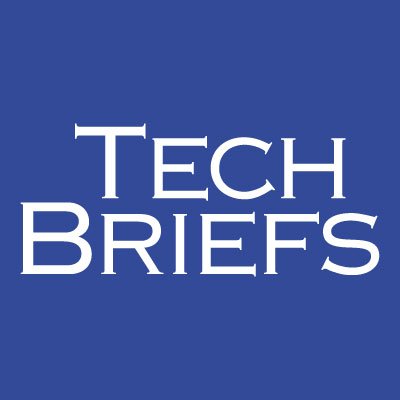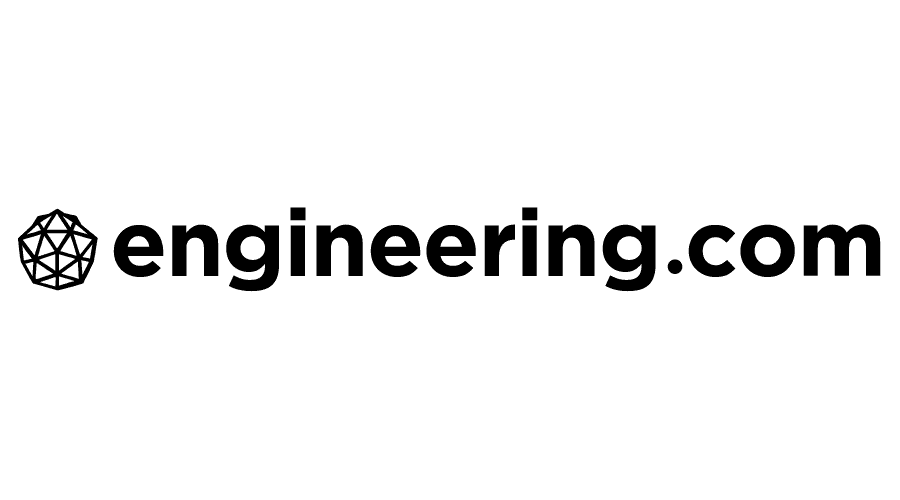
Maplesoft regularly partners with leading professional associations such as SAE International, IEEE, NASA Tech Briefs and ASEE to present webinars covering key topics in engineering, and engineering education. These webinars are recorded and are available for repeated viewings here. Note that a simple registration process is required to view the recordings.
Subscribe to our mailing list
to hear about upcoming webinars.


Original event date: Thursday September 12th, 2024
Presented in cooperation with AAC&U
Original event date: Friday September 29th, 2023
Presented in cooperation with Globalspec

Original event date: Thursday September 21st, 2023
Presented in cooperation with Tech Briefs

Original event date: Thursday March 30th, 2023
Presented in cooperation with engineering.com

Original event date: June 23rd, 2022
Presented in cooperation with Digital Engineering 24/7

Original event date: June 30th, 2022
Presented in cooperation with engineering.com

Original event date: June 23rd, 2022
Presented in cooperation with engineering.com

Original event date: Wednesday, September 29th, 2021
Presented in cooperation with ASCE

Original event date: Thursday, January 23rd, 2020
Presented in cooperation with INRIA

Original event date: Wednesday, March 13th, 2019
Presented in cooperation with INCOSE

Original event date: Thursday, November 29th, 2018
Presented in cooperation with IEEE

Original event date: Thursday, April 5th, 2018
Presented in cooperation with IEEE

Original event date: Wednesday, January 17th, 2018
Presented in cooperation with Phoenix Intergration

Original event date: Tuesday, December 5th, 2017
Presented in cooperation with Bloomy

Original event date: Tuesday, September 19, 2017
Presented in cooperation with Engineering.com

Original event date: Thursday, June 8, 2017
Presented in cooperation with ASME

Original event date: Wednesday, May 10, 2017
Presented in cooperation with the Phoenix Intergration

Original event date: Thursday, April 28, 2016
Presented in cooperation with IOP
Recordings for some webinars are only available for a limited time.
We have retained the original presentation materials and you can download them below:


Original event date: May 14, 2013
Presented in conjunction with SAE International & Nasa Tech Briefs
In this Webinar, learn how the NRC adopted a model-based approach to answer design questions early and deliver optimized strategies before the need for physical testing.
This webinar discusses a system-level modeling approach, and techniques to improve efficiency, reduce overhead costs and assist in avoiding delays in development. These techniques expedite model development, providing greater fidelity and a more simplified process, and minimizing the overall effort required to produce the model.
This webinar seeks to demystify some of the key aspects of MBSE, and show how the methodology can bring major advantages to the engineering design process.
In this webinar, learn more about recent advancements in computational physics, and see how these techniques can be applied to problems from general relativity, classical mechanics, quantum mechanics, and classical field theory. A recent project involving the digitization of the solutions to Einstein’s field equations shown in the book “Exact Solutions to Einstein’s Field Equations,” will also be presented.
This webinar will illustrate system-level modeling techniques that accelerate model development while increasing model fidelity and simulation performance and simplifying the complexity arising from multi-domain systems.
As virtual models of products, digital twins have been championed as the perfect companion for diagnostics, maintenance and product innovations. However, creating a traditional digital twin is expensive, which can exclude some companies that could best be served by them.
The world of industrial automation is undergoing a major transformation often referred to as the "Next Industrial Revolution" or "Industry 4.0". To join this revolution, manufacturers are being forced to challenge their own assumptions of traditional design processes and practices. Abandoning the “build it and tweak it” approach, manufacturers must begin to implement rigorous systems-design processes that accommodate the complexities of developing multi-disciplinary systems.
Today’s students are digital natives. As more and more learning happens online, schools must provide online education options if they want to stay relevant and competitive. Most institutions encounter challenges in making a seamless transition to online education, especially with science, technology, engineering and mathematics (STEM) courses. STEM courses require the courseware to provide interactivity, speed and ease of access so that the right balance between volume and quality of content is maintained.
Much has been made of the power of Model-based Systems Engineering (MBSE) as a formal method for capturing and managing design requirements for complex engineering systems. But what does MBSE really mean for the engineering design organization? Whenever a proponent of MBSE speaks with a mechanical or electrical design engineer on the topic, they are likely speaking different languages. Even the phrase “systems engineering” can have very different meanings!
After long iterations and expensive prototypes, it seems you’ve got all the kinks out of your design. Weeks later, your system fails in the field for some unknown reason, despite your existing design tools showing no errors. A costly repair is in order, but the underlying problem hasn’t been addressed. How do you track down exactly what went wrong?
Engineers across all industries and disciplines are often limited by their lack of modern design tools. With today’s system complexity, it’s necessary to know how an entire system behaves in combination, and this information is needed much earlier in the design phase. Innovative design tools can now capture interactions across an entire system, and they help track down unexpected failures in today’s complicated designs.
The current generation of students has grown up in a fast-paced digital world, and institutions must adopt new approaches to effectively engage them where they live-online. But making this transition to online education can be challenging—especially in Science, Technology, Engineering and Mathematics (STEM) courses.
Model-based battery management systems (BMS) testing is a safe and efficient alternative to the more traditional approach of using physical battery cells. In addition to the significant dangers when testing battery fault scenarios, it is quite time consuming and difficult to charge and discharge the cells during an automated test routine. Powerful mathematics-based battery models can be combined with HIL test systems to safely and accurately simulate advanced-chemistry batteries for testing BMS using real hardware. The model-based system further allows for increased flexibility by providing scenarios for many different battery configurations.
Generally speaking, physicists still find that computing with paper and pencil is in most cases simpler than computing with a Computer Algebra System (CAS). Although that is true in some cases, the working paradigm is changing: developments in CAS, and particularly recent ones in the Maple system, have resulted in the implementation of most of the mathematical objects and mathematics used in theoretical physics computations, and have dramatically approximated the notation used in the computer to the one used with paper and pencil, diminishing the learning gap and computer-syntax distraction to a strict minimum. In this talk, the Physics project at Maplesoft will be presented and the resulting Physics package will be illustrated through simple problems in classical field theory, quantum mechanics and general relativity, and through tackling the computations of some recent Physical Reviewpapers in those areas.
If you are grading math tests and assignments exclusively by hand, your students may be missing out.
In the past, using an automated grading system for math-based courses could actually be detrimental for your students. These systems were far too limited to give students meaningful practice, or to truly assess their understanding. But today's grading technology has advanced to the point where you are arguably doing your students a disservice if you don't include a good automated testing and assessment tool in your grading mix.
As engineered products become increasingly complex, manufacturers are forced to rethink their design processes, and there has been a growing adoption of the systems design & development process. This approach provides a framework whereby complex multi-disciplinary systems can be broken down into subsystems to a level of granularity that allows various design teams to focus on their specific contexts then carefully integrate them and verify the outcomes against requirements throughout the process.
Integrating Maple T.A., Maplesoft’s online testing and assessment tool, with a course management system allows instructors and students to move freely between the two environments without having to log in separately. Maplesoft supports the Learning Tools Interoperability® (LTI) standard, which allows connectivity between Maple T.A. and learning management systems such as Canvas. Instructors can now access the power of Maple T.A. from within the environment they are using to manage other aspects of their course. It also provides a single location to access all assignments, and a consolidated gradebook so all marks are available in one place.
In this webinar, Maplesoft will discuss and demonstrate how users can take full advantage of the power of Maple T.A. from within the Canvas environment. You will also hear how the University of Birmingham’s College of Engineering and Physical Sciences benefited from using the LTI Connector to integrate Maple T.A. into their curriculum within the Canvas LMS.
In a fast-paced world, technological advances are revolutionizing the way we live our lives. The world of education is no exception. Online education is a growing trend in institutions around the world and digital learning solutions must continually evolve to meet the demand. Early online learning methods consisted largely of one-way instruction, with professors posting videos and lecture materials online. Modern online learning tools allow instructors to create interactive learning environments where they can engage and collaborate with students in a multitude of ways. Students can work through assignments that contain interactive videos, and provide the ability to create and manipulate 2-D and 3-D shapes and plots. They can also work through endless practice and homework questions, while receiving instant feedback on their work. These solutions also ease the burden on instructors through automatic marking and assessment that frees up more time to spend working one-on- one with students. This webinar will examine trends in education technology and how online education, specifically STEM education, has evolved over the years. You will hear how early adopters such as the University of Birmingham, the University of Waterloo and the Mathematical Association of America are implementing digital education in their STEM courses. Join the webinar to get insights that will help you take advantage of modern digital learning tools and improve the educational experience online for you and your students.
To keep pace with today's competition, companies require a delicate balance of innovation and an ability to get their products to market, on time and on budget. However, as modern designs require increasingly complex features and faster delivery schedules, even the best engineers can miss important details.
Developing better design techniques will look different for every company, but many will relate to the challenges of bringing physical hardware together with their control programs. The commissioning process, as it’s known, is often a very risky stage in any product's development. Between reworking designs, over-engineering parts, or an unpredictable time to market, the costs and reputation damages can be significant. For these reasons, many are adopting a model-based approach called virtual commissioning.
As a technique, virtual commissioning stands to greatly reduce the risks inherent in many new designs. At Maplesoft, we’ve worked with leaders in the automation market to develop strategies that match each customer's particular design techniques.
Modern digital learning tools are valuable assets that better equip instructors to tailor course materials to meet the specific needs of students. These tools allow for a high-degree of customization, allowing institutions to deliver education that is more efficient, cost-effective and student-focused.
Digital learning tools, especially those designed specifically for STEM courses, provide great benefit to both instructors and students. By administering tests and assignments using these assets, instructors can better assess student learning and minimize time spent marking, which provides time to cover additional materials and interact directly with students. Software with automatic grading capabilities provides instructors with valuable data on student performance, and gives students instant feedback. Automated testing also allows students to practice concepts and work through materials at their own pace to further improve their skills.
In response to mounting concerns about climate change, many municipalities are working to increase the use of public transit while reducing the carbon emissions generated by that transit. For many transit authorities, the way forward is creating a smarter fleet electrification strategy that incorporates more electric vehicles in their fleets while keeping costs low. However, moving to an electric bus system can present serious challenges.
In order to ensure an optimized implementation of electrified bus fleets, the National Research Council of Canada (NRC) worked with Maplesoft to develop a model-based approach to simulate the electrification needs of a public transit authority. By combining virtual prototyping techniques, electrification expertise, and data about actual buses and bus routes, MapleSim Fleet Forward analyzes electric bus behavior under a variety of conditions that allow transit authorities to identify electrification issues before they occur, and make informed decisions.
As modern designs require increasingly complex features and faster delivery schedules, even the best engineers can miss important details that come to light during the uncertain stage of machine commissioning. Between reworking designs, over-engineering parts, or an unpredictable time to market, the costs and reputation damages can be significant when things don't go smoothly. For these reasons, many are adopting a model-based approach called virtual commissioning.
In this webinar, you'll gain a better understanding of virtual commissioning and see how to reduce the costs of over-engineering when designing new products.
In this webinar, learn how Quantum Insights implemented a sophisticated and complicated algorithm in record time with a minimum amount of debugging.
Quantum Insights invented a novel way of revealing structures hidden in big, complex sets of data. Its challenge was to develop a GUI capable of displaying the animations that make the algorithm easy to use and, at the same time, support the complex underlying mathematics. It used the symbolic computation tool Maple, and because of the way Maple's interface works, Quantum Insights was able to quickly get a proof of concept in a matter of days, using interpreted code. In addition, they also successfully replaced the interpreted code with compiled code to make it possible to handle large datasets with the requisite speed. Finally, they were able to prototype the approach using Maple's threads package.
In this webinar, attendees will hear from NASA's Jet Propulsion Laboratory (JPL) about a recent pilot project that introduced ways to broaden engagement with their SE practices using MapleMBSE, a tool that uses Excel as the user interface. MapleMBSE provides a technology that generates task-specific views into the system model, serving up the relevant information in tabular or matrix forms that can be directly edited, all with a live connection to the systems model. This allows stakeholders, from all disciplines and functions throughout the enterprise, to collaborate via the model and engage more effectively with Systems Engineering process.
Attendees can expect to learn more about the various ways that JPL was able to broaden engagement and collaboration, and see how these techniques might apply to their own organizations.
Dans ce Webinar, Yacine Bouzidi, chercheur dans l’équipe-projet Ouragan (équipe commune Inria, Cnrs, Sorbonne Université, Université Paris Diderot) à l’Institut Mathématique de Jussieu, présente un travail en cours de réalisation portant sur le développement d'une librairie Maple nommé StabND et dédiée à l'étude de la stabilité et de la stabilisation de certain types de systèmes en théorie du contrôle appelés systèmes multidimensionnels ou systèmes n-D. L'étude de la stabilité et de la stabilisation de ce type de systèmes soulève un certain nombre de questions calculatoires difficiles (et pour certaines ouvertes). Nous montrerons dans cette présentation que par des reformulations algébriques, ces questions peuvent être simplifiées et traitées efficacement au moyen de commandes Maple standards pour l'étude de zéros de systèmes algébriques. Cette présentation est accompagnée de nombreux exemples illustratifs.
From structural steel and reinforced concrete to highways and transportation, Civil Engineers build the world around us. To do that, they need to know the right mathematics, but even with building codes and design guides like IBC/IRC, it requires experience to apply them correctly and to present in a clear format.
This webinar focuses on the steps of creating and presenting civil engineering calculations to improve the communication of essential design elements. We compare several software tools taking examples from across a broad variety of civil and structural engineering projects using Excel and Maple Flow calculation software.
While math is just math, engineering math is different. The differences arise due to the physical principles from which those equations are derived, how engineers (with all their human biases and emotions) work, and the framework organizations use (or lack thereof) to archive, categorize and deploy calculations.
This webinar will help you to understand:
The basic question of whether the tools and techniques of an aging engineering toolchain are sufficient to meet emerging design challenges has engaged the global engineering community in many segments. This webinar offers insights into the key challenges facing modern engineering, focusing in particular on the challenge of inverse kinematics.
More and more manufacturers are relying on digital twins to understand how and when products in the field might fail, but how reliable are the twins’ predictions? Does the physics in the digital model accurately capture the functions of the product? Is there enough historical data to make projections? These questions and more are answered in this Hot Seat panel discussion on digital twin technology.
You might still take notes on paper. Paper offers a very real sense of familiarity and fluidity that you don’t get with computers and digital devices.
But what about math?
Most scientific and engineering calculations are not practical to do on paper, so you probably use software – probably a spreadsheet. But these don’t offer the tactility of paper, and they make reading calculations difficult.
That was the driving force for the development of Maple Flow – a digital notepad that reproduces the design metaphor of paper, but with a units-aware math engine purring away under the hood.
This webinar will introduce you to Maple Flow, and walk through typical applications for Civil, Electrical and Mechanical Engineers.
Advances in Industry 4.0 are enabling engineers to take their designs into the digital realm, where they can envision how their designs will survive in the real world. A digital twin of the product allows designers to rapidly create new iterations and experiment with different configurations, all without building expensive prototypes. Before a single prototype is constructed, engineers can test their designs virtually to ensure the highest quality. In this 60-minute Webinar from the editors of Tech Briefs, learn how to accelerate and optimize the product design and development process using the digital twin.
Topics include:
An audience Q&A session will follow the technical presentations.
Chris Harduwar, VP of Strategic Solutions at Maplesoft joins us to discuss the challenge of making manufacturing systems more robust, and how simulation can bring new opportunities beyond design and product development. Additionally, through virtual prototyping and digital twins, it can improve day-to-day operations and even lead to reduced downtime.
Transform the math classroom into a “thinking classroom” and discover a new avenue for critical thinking and collaborative learning for all students. This webinar will show you how to apply the principles from Peter Liljedahl’s book, Building Thinking Classrooms in Mathematics, to your teaching practice, whether your courses are in person, hybrid, or fully online.
Peter Liljedahl defines a thinking classroom as "a classroom that is not only conducive to thinking but also occasions thinking, a space that is inhabited by thinking individuals as well as individuals thinking collectively, learning together, and constructing knowledge and understanding through activity and discussion."
Don’t miss an opportunity to explore how technology can empower you and other math educators to realize the objective of a "thinking classroom” at the institutional level. Drawing on knowledge and experience gained from classroom instruction, educational research, and their use of math technology, the presenters will discuss ways you can engage your students and enhance learning outcomes by using interactive activities that naturally foster collaboration, discussion, and effective practice.